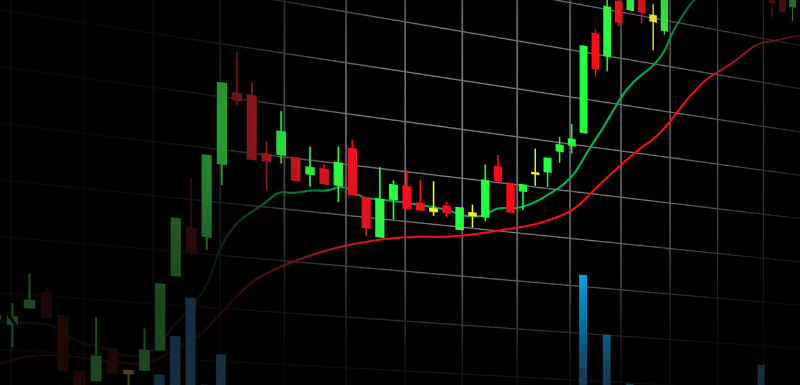
A Simple Stock Market Ready Reckoner
Read this blog if you are confused about investing in stock markets, here is 25 point “ready reckoner” for stock market investing. To know more, visit FinEdge now!
Greetings to all our valued clients! Over the decades, the stock markets have stumped individual investors and experts alike. This month, we present a simple 25 point “ready reckoner” for stock market investing. We hope you find it useful!
Here we go…
1. “Bullish” is when you expect the markets to go up. “Bearish” is when you expect the markets to come down.
2. In the stock market jungle, three kinds of people co-exist. “Investors” make money in the long term. “Speculators” (gamblers) lose money in the long term. “Hedgers” sit on the fences and don’t make any money in the long term but feel like geniuses because they implemented complex strategies.
3. When investing in stock markets, leave your emotions at the door. Never buy out of greed, never sell out of fear. Mr. Market is a brilliant conman who will try his best to make you do both from time to time!
4. The primary reason to invest in a stock is because the company is making a profit and you want to participate in its long-term success. Not because you or your friends are “feeling bullish” about it and or/ wire-tapped the company CFO and discovered some private information.
5. What’s a thumb rule to buy a stock then? Here’s a simple one from the great Warren Buffet: “If you think a company will be around 20 years from now then it is probably a good buy right now.”
6. In some cases (such as a severe bear market), stocks aren't a good investment at all.
7. A stock's price is dependent on the company, which in turn is dependent on its environment, which includes its customer base, its industry, the general economy, and the political climate.
8. Your common sense and logic are more important for choosing a good stock than the advice of any investment expert.
9. Day Trading is the best way to make money in the stock markets – for your stock broker, that is. You, on the other hand, will lose money consistently!
10. Close to 95% of short term traders lose money in the long run. Yup, you’re actually better off gambling!
11. “Short term” in the context of stock markets is anything from 1 day to 6 months. “Long term” in the context of stock markets is 3-5 years (not 3-5 months)
12. Never buy a stock on a tip. For every one tip that pays off, another four will crash and burn. Your “tipper” friend will never brag about the other four (But he’ll surely say “I told you so” for the one that took off!)
13. Chances are, you won’t be able to “beat the index” with your own stock selections. Opt for good old “boring” Nifty stocks and hold them for the long term instead. (Refer point 11)
14. Better yet, opt for a highly rated equity mutual fund. What could be better than having someone else (the fund manager) do the hard work for youJ?
15. “Derivatives” include “futures” and “options”. Futures can be best understood as a parallel market for stocks or indices where you are magically permitted to sell a stock or index before you buy it! (Short- selling). “Options” give you the right to buy or sell a share or index at a future date at a predetermined price.
16. You will lose money in derivatives for the first year of trading. Maybe the first five years. Most probably forever. There’s a good reason why the world’s best investor Warren Buffet called them “weapons of mass destruction”. Avoid them!
17. When you buy or sell futures worth Rs. 100,000, you don’t need Rs. 100,000. Depending on the stock or index in question, you’ll need between Rs. 10,000 and Rs. 50,000. This is called “margin” and can greatly amplify your percentage profit or losses. (It usually amplifies losses)
18. “Arbitrage” is a dangerous sounding word for “riskless profit”. In the context of stock markets, it involves buying a stock AND simultaneously selling the same stock in the futures market, if a price differential exists. On the last Thursday of the month (called futures expiry date), the prices usually converge, yielding a riskless profit whatever the final closing price. Do the math and see, its fun!
19. OK, we’ll do the math for you. Let’s say a stock trades at Rs. 8 in the normal segment and Rs. 10 in the futures segment. You buy 1 stock (in the normal segment) and sell 1 stock (in futures) simultaneously. On the expiry date, the price converges at Rs. 9. You make Rs. 1 profit from both trades (a net profit of Rs. 2). What if the stock crashes to Rs. 6? You make a loss of Rs. 2 on the first trade and a profit of Rs. 4 on the second trade (a net profit of Rs. 2). What if the stock rises to Rs. 12? You make a profit of Rs. 4 on the first trade and a loss of Rs. 2 on the second trade. A profit of Rs.2 again! It’s almost magical.
20. Stocks and stock markets rise and fall in anticipation of events, never as a result of events. If you’re waiting for some specific news item before you enter a stock – remember, the market will beat you to it.
21. The expert on CNBC-TV18 is probably as clueless as the next person about the next big “turn” the market is going to take. Real experts don’t appear on TV – they are cooped up in their trading rooms making millions. It’s likely they don’t even switch on their TV’s during trading hours.
22. BTST stands for Buy Today Sell Tomorrow. It’s a facility that allows you to sell shares even one day after you buy, without actually receiving the shares into your DEMAT account (which takes 3 days). It’s a highly recommended strategy for your stock broker. In other words, it’s a cheeky way for your broker to maximize portfolio turnover (and hence brokerages) in a bullish market!
23. What are “circuits”? Upper and Lower circuits sometimes get triggered for stocks (and very rarely for indices). These circuit levels range from 10% to 20% above or below the previous closing price, and circuit breakers bring trading to a pause or a complete halt for the day (so traders can grab a mug of cold beer and regain their sanity). The main purpose of circuit breakers is to curb panic selling. Beware – some stocks which are listed in the futures market don’t have circuit filters! (think “Free Falling” by Tom Petty)
24. What if we are in a bubble? Some hedge fund manager (David Einhorn) just said we might be in a tech bubble. Back to point 21: He doesn’t know. It’s just a headline. Bubbles don’t mean anything. We had an internet bubble in the 90s. Then, a housing bubble. Bubbles, bubbles, bubbles! And if you just held through all of that, your stock portfolio would be at an all-time high right now, with the Nifty closing the week at nearly 8400.
25. Lastly - should you put all of your money in stocks? No. Use this guideline: No more than 5% of your portfolio in any one stock. But if the stock grows past 5% you can keep it. To quote Warren Buffett again: “If you have LeBron James on your team, you don’t trade him away.” No more than 50% of your total portfolio (including FD’s and real estate) in stocks (unless some of the stocks grow, in which case you just keep letting them grow).
Still confused about investing in the stock markets? Please feel free to write to us at servicedesk@finedge.in
Your Investing Experts
Relevant Articles
Upcoming Lok Sabha Elections: Do They Warrant Any Change in Your Portfolio And Strategy?
India will be heading to Union Elections in the months of April and May. The results will be announced on 4th June 2024.
A Simple Stock Market Ready Reckoner
Read this blog if you are confused about investing in stock markets, here is 25 point “ready reckoner” for stock market investing. To know more, visit FinEdge now!
.png)
